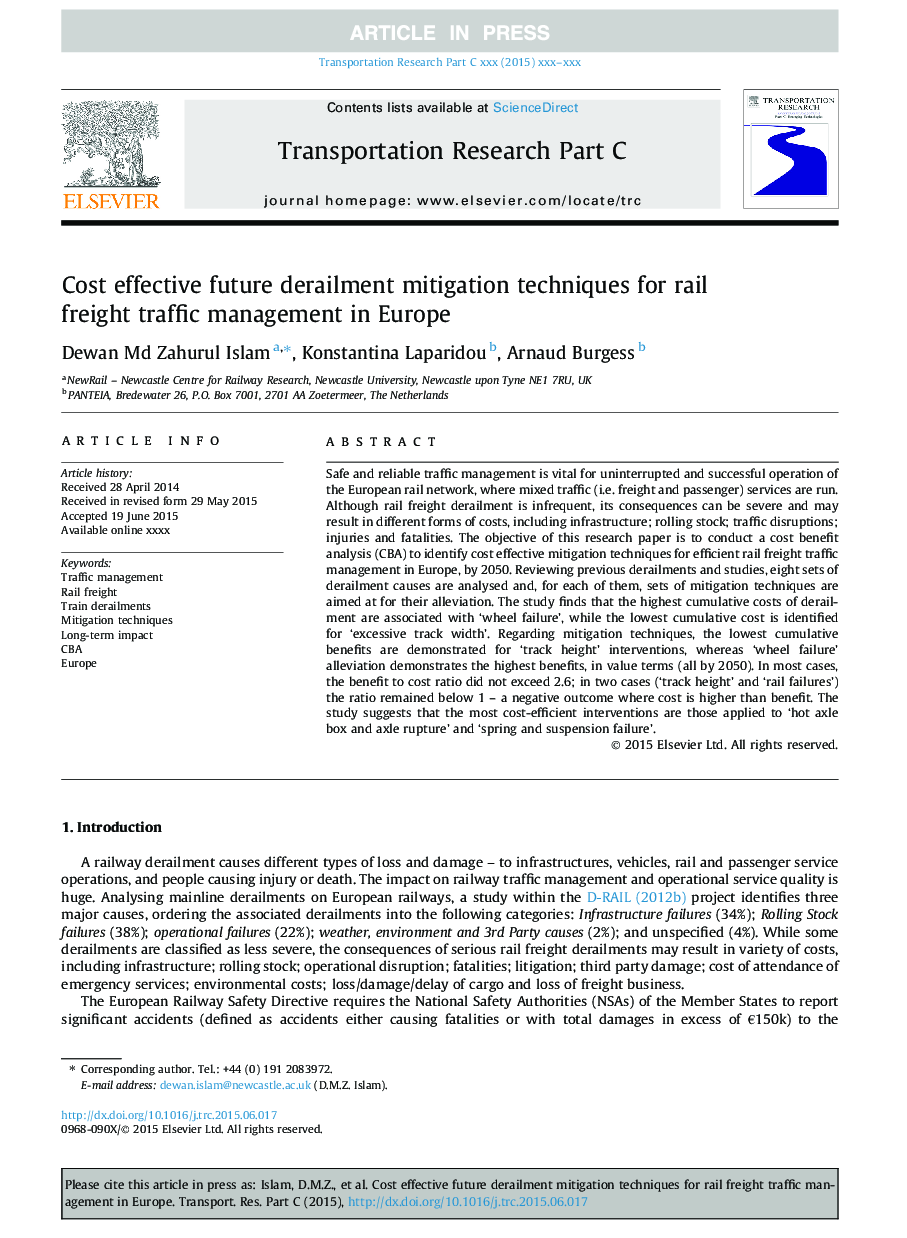| Article ID | Journal | Published Year | Pages | File Type |
|---|---|---|---|---|
| 4968543 | Transportation Research Part C: Emerging Technologies | 2016 | 12 Pages |
Abstract
Safe and reliable traffic management is vital for uninterrupted and successful operation of the European rail network, where mixed traffic (i.e. freight and passenger) services are run. Although rail freight derailment is infrequent, its consequences can be severe and may result in different forms of costs, including infrastructure; rolling stock; traffic disruptions; injuries and fatalities. The objective of this research paper is to conduct a cost benefit analysis (CBA) to identify cost effective mitigation techniques for efficient rail freight traffic management in Europe, by 2050. Reviewing previous derailments and studies, eight sets of derailment causes are analysed and, for each of them, sets of mitigation techniques are aimed at for their alleviation. The study finds that the highest cumulative costs of derailment are associated with 'wheel failure', while the lowest cumulative cost is identified for 'excessive track width'. Regarding mitigation techniques, the lowest cumulative benefits are demonstrated for 'track height' interventions, whereas 'wheel failure' alleviation demonstrates the highest benefits, in value terms (all by 2050). In most cases, the benefit to cost ratio did not exceed 2.6; in two cases ('track height' and 'rail failures') the ratio remained below 1 - a negative outcome where cost is higher than benefit. The study suggests that the most cost-efficient interventions are those applied to 'hot axle box and axle rupture' and 'spring and suspension failure'.
Related Topics
Physical Sciences and Engineering
Computer Science
Computer Science Applications
Authors
Dewan Md Zahurul Islam, Konstantina Laparidou, Arnaud Burgess,
